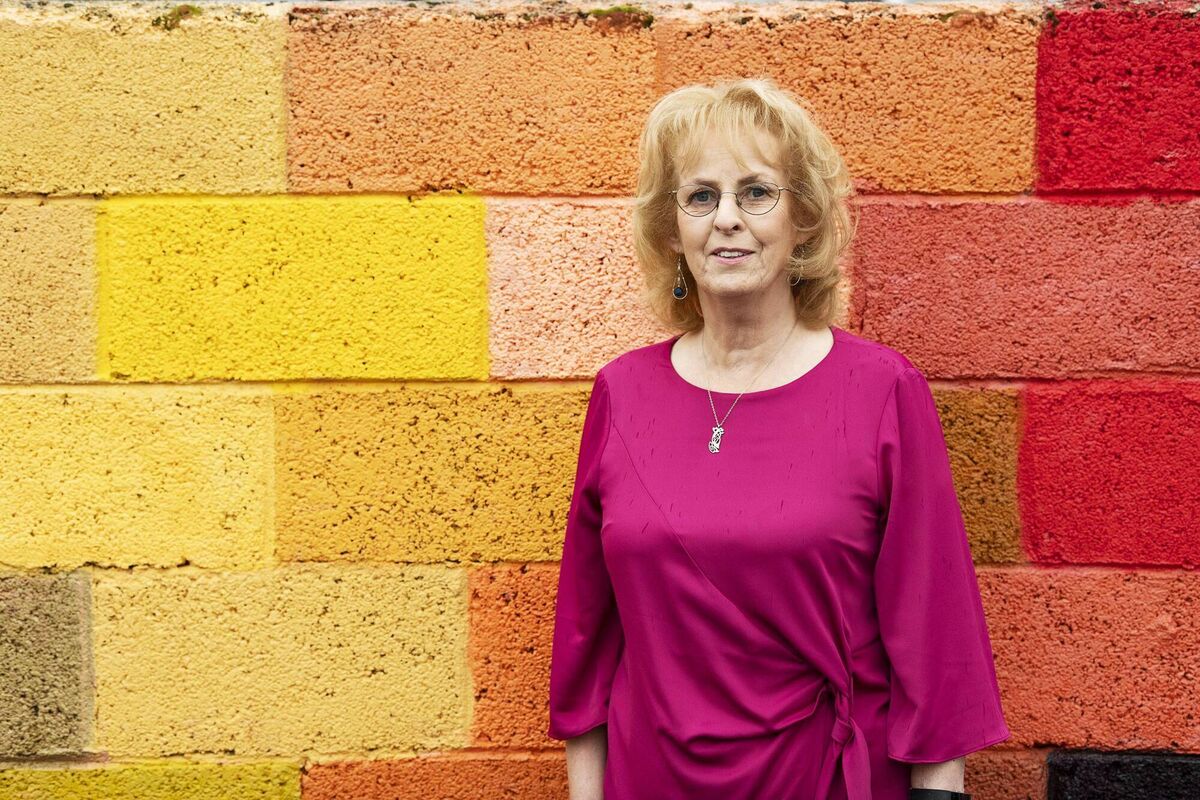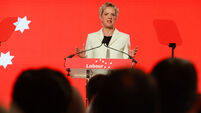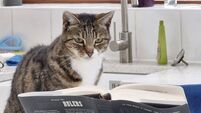Jennifer Horgan: We can't allow AI to forge its way into the arts

Velvet Sundown. Entirely generated by AI, they got over one million monthly listeners on Spotify before their origins were revealed. The music sounds pretty good to me – I wish it didn’t.
Trust in art is being eroded this week.
The beloved and bestselling memoir, , is playing its part.
If you’re not one of its two million readers, it’s a book charting one couple’s remarkable bad luck, then celebrating their even more remarkable redemption, via a very long walk along England’s southern coast. It was made into a film starring Gillian Anderson and Jason Isaacs last year.
Cut to 2025 and critics are now suggesting we regard its heroic plotline with more than a pinch of salt. According to investigative journalists at , it’s far more fiction than memoir. The family home was lost not through a bad investment but through fraudulent activity, they claim. The husband’s diagnosis is also being described as "unlikely" by consulted medical experts.
Trust is certainly being tested, but whatever about the reliability of human authors, far more threatening is the flooding of art by AI.
Rita Ann Higgins was on Brendan O’Connor last weekend to read two poems on air. One was her own, a poem she probably drafted and re-drafted for hours. The second was generated by prompting AI for a poem in the style of the Galway native. It took seconds. Listeners were asked to identify the genuine article.
Spoiler alert: 70% of listeners, including journalist Mark Little, got it wrong.
I write, read, and teach poetry, and I was very nearly duped. There was a strong ‘voice’ in the AI poem, but there was one detail in , the real poem, holding me back – the description of a chair. Possibly I’d read the poem before. I heard Rita Ann Higgins at Listowel this summer, so maybe I caught it there.
My limited knowledge of Rita Ann Higgins was my only safety net. In the end, it was the only thing that made me question the AI poem, which was convincing, wrapped up in history, human suffering, and the female voice.
No surprise there – AI Is designed to convince us. We are not to be trusted. Most of us, studies suggest, will go for AI poetry over the human. AI-generated material is familiar. It is made from parts known, what’s already in the ether, and tends to be more basic and straightforward. AI poetry is the elevator music of poetry. As natural meaning makers we respond positively to its simple formula.

This is why Instagram poetry is so popular, those one-verse wonders that sum up everything – all of it, all at once. It is universally accessible, targeting the emotional jugular. It is a formula, and it works.
In truth we have been in training for this consumption of AI-produced art for decades.
Pop music has been paving the way. Most modern pop music is not the work of an individual artist. It is the product of a small handful of commercial writers, publicists and strategists. It is product-based, designed for maximum, easy consumption. It’s like white bread versus wholemeal – made to go down easy for maximum profit.
The same type of material has taken over Hollywood. Mega blockbusters are indistinguishable from AI. Alongside reboots, regurgitations of what came before, they get bums on seats, but they aren’t created so much as manufactured.
Highly commercial art in general has made us highly susceptible to the ravages of AI. The horse has already bolted.
Don’t get me wrong, popular art can be satisfying but the fact that there is no one artist behind it, driving it, the fact that there is no deeply felt meaning, no truth, makes it problematic. It weakens our creative and critical muscle.
There is always a small subset of artists who escape this trap. Billie Eilish for instance – an artist who writes her own music in partnership with her brother – is different. True art relies on such authenticity – an artist or a small group of people with a shared value and purpose.
Genuine art comes from human experience and prioritises a desire to share some truth with the world. Commercial art, the gateway to AI art, prioritises business, money, and strategy.
AI might just have a positive impact if it hastens our realisation that the voice of the artist in the art matters.
I need to realise it myself. I fly through playlists on Spotify without checking the name of the artists. I read lots of stories and poetry without really tracking and engaging with the writers. As a society, we talk about ‘supporting’ the arts, as if it’s an act of charity.
This laziness allows AI in. Bands like ‘Velvet Sundown’ are proof enough. Entirely generated by AI, they got over one million monthly listeners on Spotify before their origins were revealed. The music sounds pretty good to me – I wish it didn’t. But here’s the rub. If I wanted to tell the band I like their stuff, I’d be shouting into the void. There is nobody there.
It reminds me of a woman I met recently. She wanted an author to add the date to a book they were signing for her. She had lost a friend on the same day five years previously. One of the poems brought a memory of this friend back. She had tears in her eyes. The poem created a connection between herself and the poet – a genuine human connection. It was more about them, two humans navigating life, than it was about the poem.
Art connects us. We are creatures who live every day knowing we won’t live forever. Art explores that suffering. Even happy or funny art – art about love and joy and sex – it is beautiful because we all understand the context. Our lives are built on sand; they are built and then they are washed away. Art strives to leave traces behind, after the tide comes in.
Data never dies or suffers or yearns or feels. Data doesn’t care what you might think or feel about it. My genuine hope is that AI forces us to listen out more carefully for the artist in the art.
Interestingly, Rita Ann Higgins took offence to one of the lines in her AI-generated poem. It mentioned something about asking for a "degree" but getting a "mop". The poet felt it was insulting to people without degrees, or to people who might work with mops.
The AI-generated poem did not belong to Rita Ann Higgins. There was no human behind it, and so it is not only not hers, it is also not art.
We will get better, I assume, in identifying the voices we know and admire. A genuine fan of Rita Ann Higgins would not have needed help picking the right poem. They would have known her unique perspective on the world, that she would never have distinguished between people who carry mops and people who carry degrees.
The experiment on the Brendan O’Connor show proved something other than the power of AI. It showed us how lightly we read these days, how casually we listen, even to the words of our most popular artists. Changing the standard of our engagement will defend art against AI, as will properly investing in artists.
The biographies and perspectives of writers and artists are going to become more important in the years ahead. Readings and interviews are really going to matter. It will be the philosophy, the ideas behind the work, the context, that matters most. We will need to become superfans again – of the artists we truly love.
Trust will be increasingly important. Human art that lies, that is untrue, is a nuisance. If the accusations against turn out to be valid, then the memoir is an act of bad faith, a disappointment to many.
Society allowing AI to take over art is a whole other ball game. If we don’t defend ourselves fiercely, ferociously even, as far as this columnist is concerned, it’s game over.






